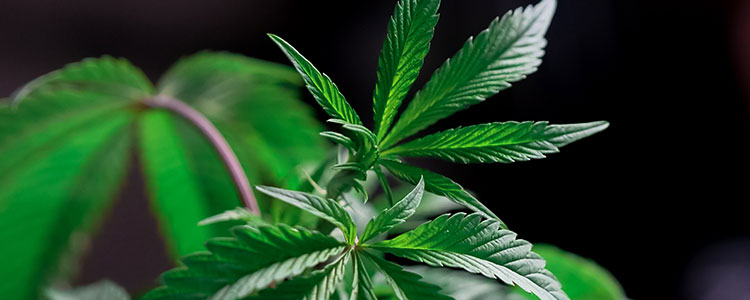A large number of cannabis consumers focus on THC and CBD content. These two compounds are undoubtedly crucial to the plant and the experience it creates. Still, they are just two of several hundred compounds contributing to the overall result.
That's where the total active cannabinoids (TAC) come in.
By considering a strain’s TAC level, consumers can better understand what compounds make up a particular strain, how it may affect them, and how to find similar products that can deliver comparable effects.
Read on to learn more about the similarities and differences between THC and TAC, as well as why scores of consumers are now considering the complete set of active compounds in a strain.
What is THC?

THC (Tetrahydrocannabinol) is the most commonly found cannabinoid in the cannabis plant. The cannabinoid is best known for its intoxicating effects, or “high.” Most strains rich in THC gain their notoriety for delivering a specific outcome, like euphoria, creativity, relaxation, or couch-lock. But unless you’re using an isolate (more on those later), these varied results are made possible thanks mainly to additional active plant compounds.
Cannabinoids and other plant compounds work in the body to affect various receptors and systems. But the cannabinoids you inhale aren’t necessarily the same as those in dry flowers. That’s because THC and other cannabinoids go through conversions over time. For example, THC only becomes intoxicating when tetrahydrocannabinolic acid (THCA) is heated and subsequently decarboxylated. Once exposed to heat, the THCA converts into the more familiar THC that we all know and love.
By focusing exclusively on THC levels, you might be underestimating the strength and effects of a particular product or strain. That’s where TAC comes in.
What Exactly Does "TAC" (Total Active Cannabinoids) Mean?

Product testing is a critical component of understanding plant composition. Some states have prioritized lab testing in their regulations, including required third-party lab testing and certificates of analysis or analysis (COA). These tests help us understand a plant's complete chemical profile and identify potential contaminants that may remain after harvesting or manufacturing.
You might think that understanding the plant's complete chemical composition is excessive at first. But with strains affecting everyone differently, understanding exactly what is in your favorite flower is a wise idea for consumers of all types. By understanding which of a strain’s cannabinoids are present and how they can affect you, you can more easily find products with the desired effects.
Thanks to stellar sources like Leafly, the research has become easier over the years, but progress is still needed. And many consumers still have questions about what exactly a plant’s TAC reveals about the product and its effects.
TAC is used to identify the total composition of the plant and its active cannabinoids at the time of lab testing. A plant's TAC is calculated using several plant compound categories, each impacting effects and potency. These molecular categories include flavonoids, terpenoids, alkaloids, glycoproteins, and fatty acids.
Still, TAC’s primary use in the eyes of many consumers is its cannabinoid compound analysis. Understanding which cannabinoids are present is essential to understanding cannabis products and strains. Because unlike traditional pharmaceuticals, cannabis does not have a single compound; instead, it has a myriad of pharmacologically active molecules that can affect the outcome.
Cannabis currently has 400 or so identifiable compounds across its various strains. Of these, more than 100 are cannabinoids. Some of the most commonly found cannabinoids in cannabis – besides THC and CBD – include cannabinol (CBN), cannabigerol (CBG), and cannabichromene (CBC). Thanks to lab testing and TAC analysis, we have a better understanding of how each strain should affect most consumers.
The Differences Between TAC and THC
With THC testing, the analysis focuses specifically on one cannabinoid. With TAC, the entire cannabis plant profile is under the microscope as every active component of the plant is cataloged.
A comprehensive focus is always helpful, but THC-focused testing is equally important. As the most prominent and intoxicating compound in the plant, THC potency is essential to the overall experience. It also gives consumers a simple starting point when considering the strain they wish to purchase.
How are THC and TAC Related?
How are THC and TAC Related?
THC and TAC components play an intertwined role in the consumption experience. Because of a phenomenon commonly known as the entourage effect, it is believed that different cannabinoids and terpenes can work in conjunction with one another. As such, the cannabis consumption experience is best delivered when consuming as much of the combined plant profile as possible.
Many studies have also concluded that a combination of cannabinoids may be beneficial for a number of conditions.1 Ratioed products (1:1 CBD/THC, 2:1, 10:1, etc) have also emerged in recent years, offering consumers a range of balances between the two cannabinoids and their effects.
As cannabis research gains more funding, we’re also learning more about other cannabinoids and how they might affect user experience. Cannabigerolic acid (CBGA), better known as the mother of all cannabinoids, is considered the precursor to multiple cannabinoids, including CBD and THC. It’s the starting compound that eventually breaks down into cannabigerol (CBG) before further breaking down into various cannabinoids, including THCA.2 By reviewing a plant's TAC, consumers and scientists can better understand each strain’s potential effects and benefits.
Further clinical analysis will illuminate the relationship between the compounds found in the cannabis plant, empowering cannabis consumers even more.
How Does TAC Influence the “Entourage Effect”?
Active cannabinoids play a critical role in determining a plant's potency and its effects. So, too, do the various other compounds recorded in TAC analysis. The synergistic effect of these compounds, known as the entourage effect, can be better understood and analyzed by considering a strain’s TAC.
Such comprehensive testing has helped us recognize the effects of various cannabis compounds – both on the human body and on each other. As mentioned above, a significant breakthrough came when researchers discovered that CBD could lessen the effects of THC.
Research into specific cannabinoids has also unearthed the potential these compounds may have on their own. Those consumers looking to experience the benefits of a particular cannabinoid can now turn to isolates that refine the plant to a singular powdery compound (pure THC or CBD, for example). In other cases, distillate can offer consumers a minimal curated range of plant compounds rather than its complete range of total active cannabinoids.
For those consumers who prefer the whole plant profile, TAC analysis becomes especially helpful in understanding the various cannabinoids, terpenes, and flavonoids that will determine the effects, flavor, and aroma a strain produces.
Key Takeaways on TAC vs THC
While this has been posed as a battle between THC and TAC, in actuality, there is no clear winner; each is important. Using both THC percentage and a plant’s TAC, it’s possible to better understand the strength and effects you can expect from a given cannabis strain.
With THC analysis, the active THC in a strain – as well as the THCA that decarboxylates into THC – take center stage. This test provides a better look at a plant's total THC level than its entire cannabinoid composition.
TAC helps provide a complete analysis of a particular strain. Examining THC, CBD, and hundreds of other plant compounds makes it possible to understand what makes a strain unique entirely. Doing so can deliver more specificity and accuracy to consumers, especially patients who need specific dosages and effects as part of their treatment.
It’s important to remember that cannabis affects everyone differently. While THC and TAC analyses help give a better understanding of what may come from consuming a strain, they don’t guarantee those results. Each person’s physiology, experience, and even how hydrated they are will impact the outcome of each consumption experience.
Still, with these analyses, medical marijuana doctors and patients are more empowered than ever.
Resources
- Bhaskar A, Bell A, Boivin M, et al. Consensus recommendations on dosing and administration of medical cannabis to treat chronic pain: results of a modified Delphi process. J Cannabis Res. 2021;3(1):22. Published 2021 Jul 2. doi:10.1186/s42238-021-00073-1 ↩︎
- Walsh KB, McKinney AE, Holmes AE. Minor Cannabinoids: Biosynthesis, Molecular Pharmacology and Potential Therapeutic Uses. Frontiers in Pharmacology. 2021;12. doi:https://doi.org/10.3389/fphar.2021.777804 ↩︎
The information in this article and any included images or charts are for educational purposes only. This information is neither a substitute for, nor does it replace, professional legal advice or medical advice, diagnosis, or treatment. If you have any concerns or questions about laws, regulations, or your health, you should always consult with an attorney, physician or other licensed professional.




